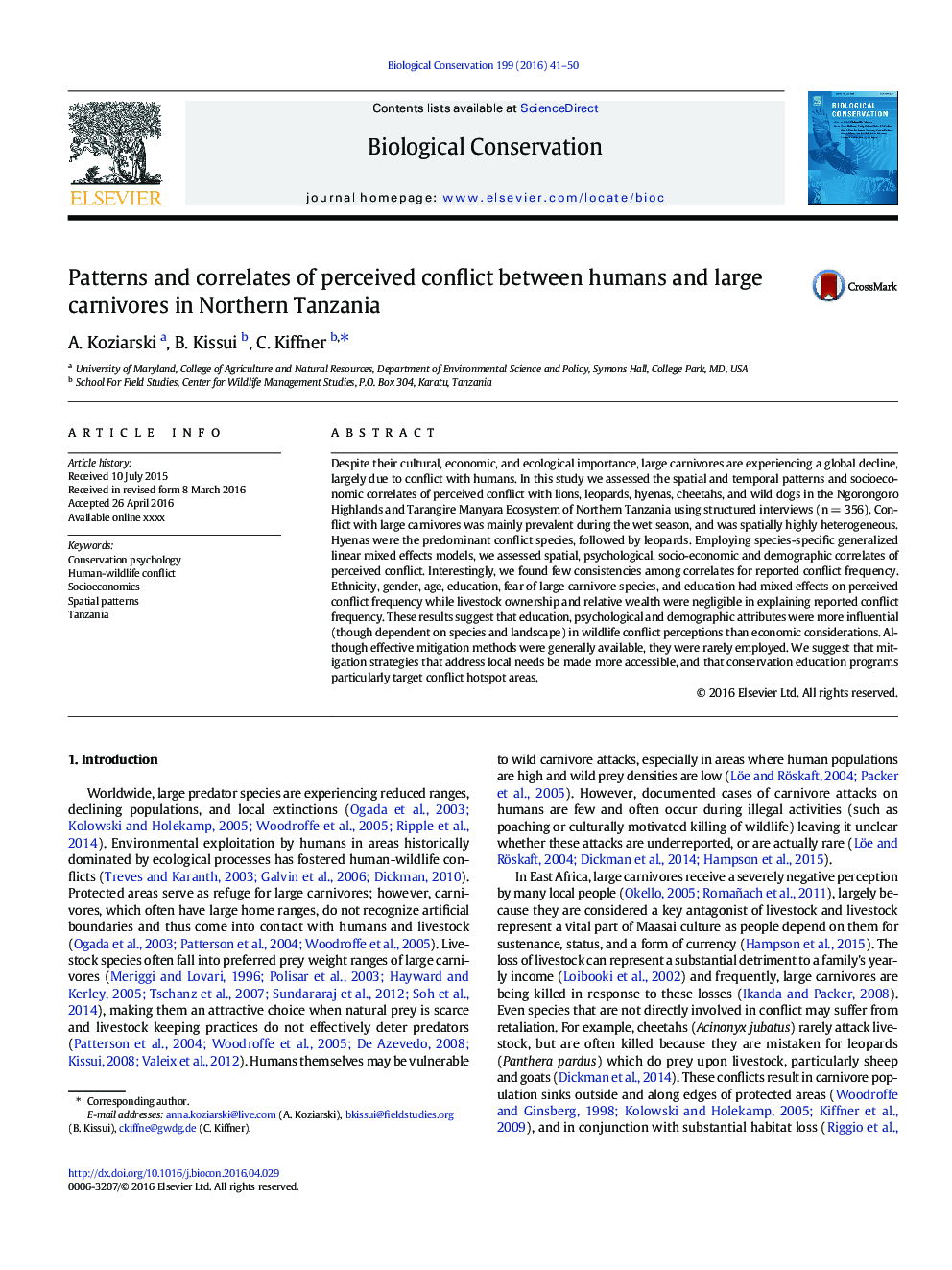| Article ID | Journal | Published Year | Pages | File Type |
|---|---|---|---|---|
| 6298337 | Biological Conservation | 2016 | 10 Pages |
Abstract
Despite their cultural, economic, and ecological importance, large carnivores are experiencing a global decline, largely due to conflict with humans. In this study we assessed the spatial and temporal patterns and socioeconomic correlates of perceived conflict with lions, leopards, hyenas, cheetahs, and wild dogs in the Ngorongoro Highlands and Tarangire Manyara Ecosystem of Northern Tanzania using structured interviews (n = 356). Conflict with large carnivores was mainly prevalent during the wet season, and was spatially highly heterogeneous. Hyenas were the predominant conflict species, followed by leopards. Employing species-specific generalized linear mixed effects models, we assessed spatial, psychological, socio-economic and demographic correlates of perceived conflict. Interestingly, we found few consistencies among correlates for reported conflict frequency. Ethnicity, gender, age, education, fear of large carnivore species, and education had mixed effects on perceived conflict frequency while livestock ownership and relative wealth were negligible in explaining reported conflict frequency. These results suggest that education, psychological and demographic attributes were more influential (though dependent on species and landscape) in wildlife conflict perceptions than economic considerations. Although effective mitigation methods were generally available, they were rarely employed. We suggest that mitigation strategies that address local needs be made more accessible, and that conservation education programs particularly target conflict hotspot areas.
Related Topics
Life Sciences
Agricultural and Biological Sciences
Ecology, Evolution, Behavior and Systematics
Authors
A. Koziarski, B. Kissui, C. Kiffner,
